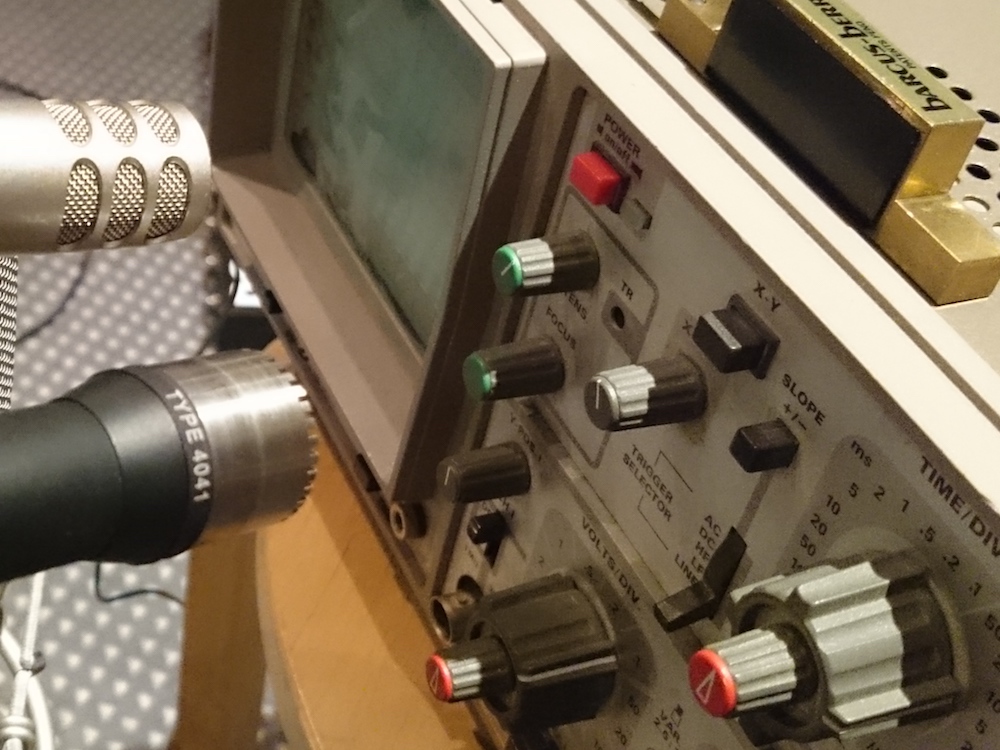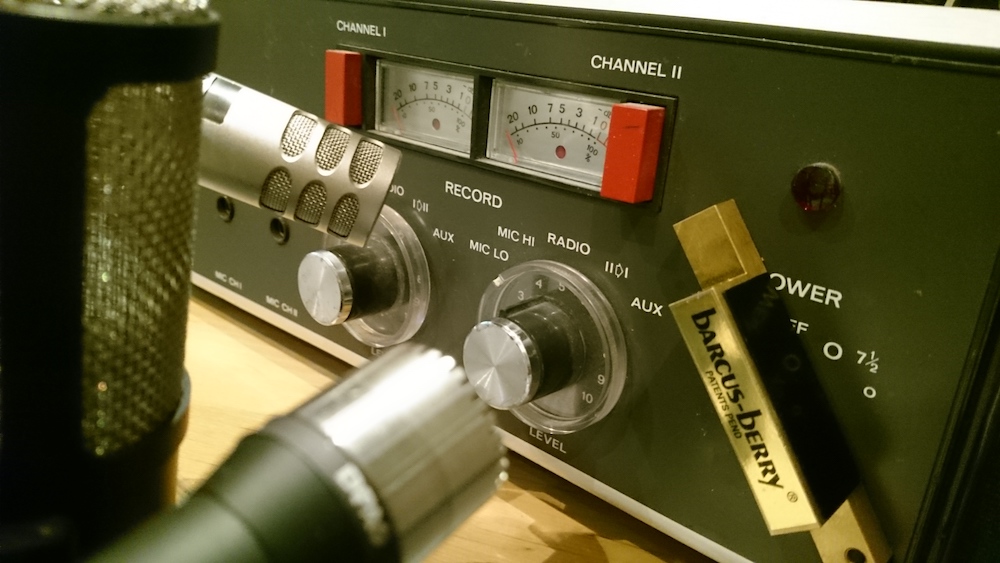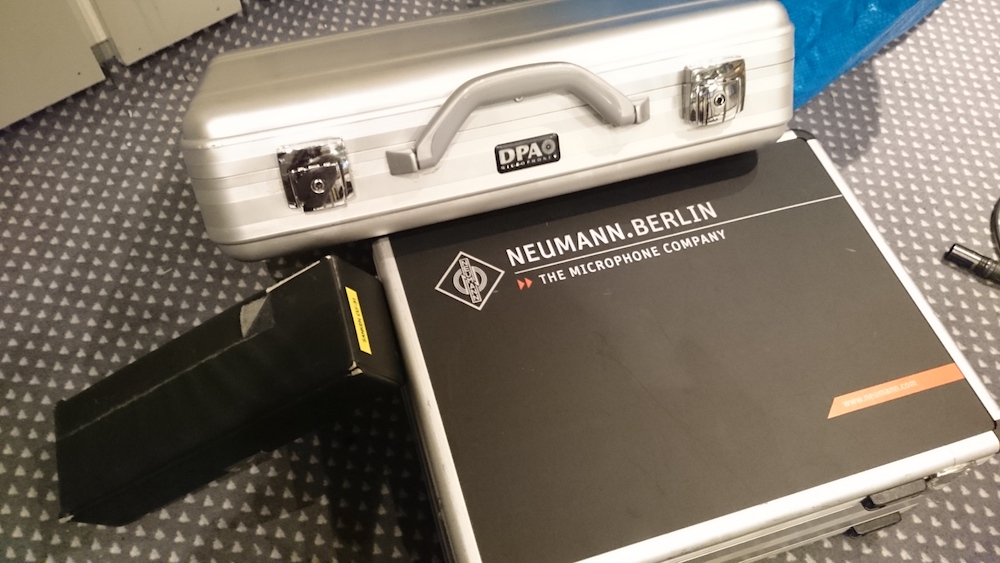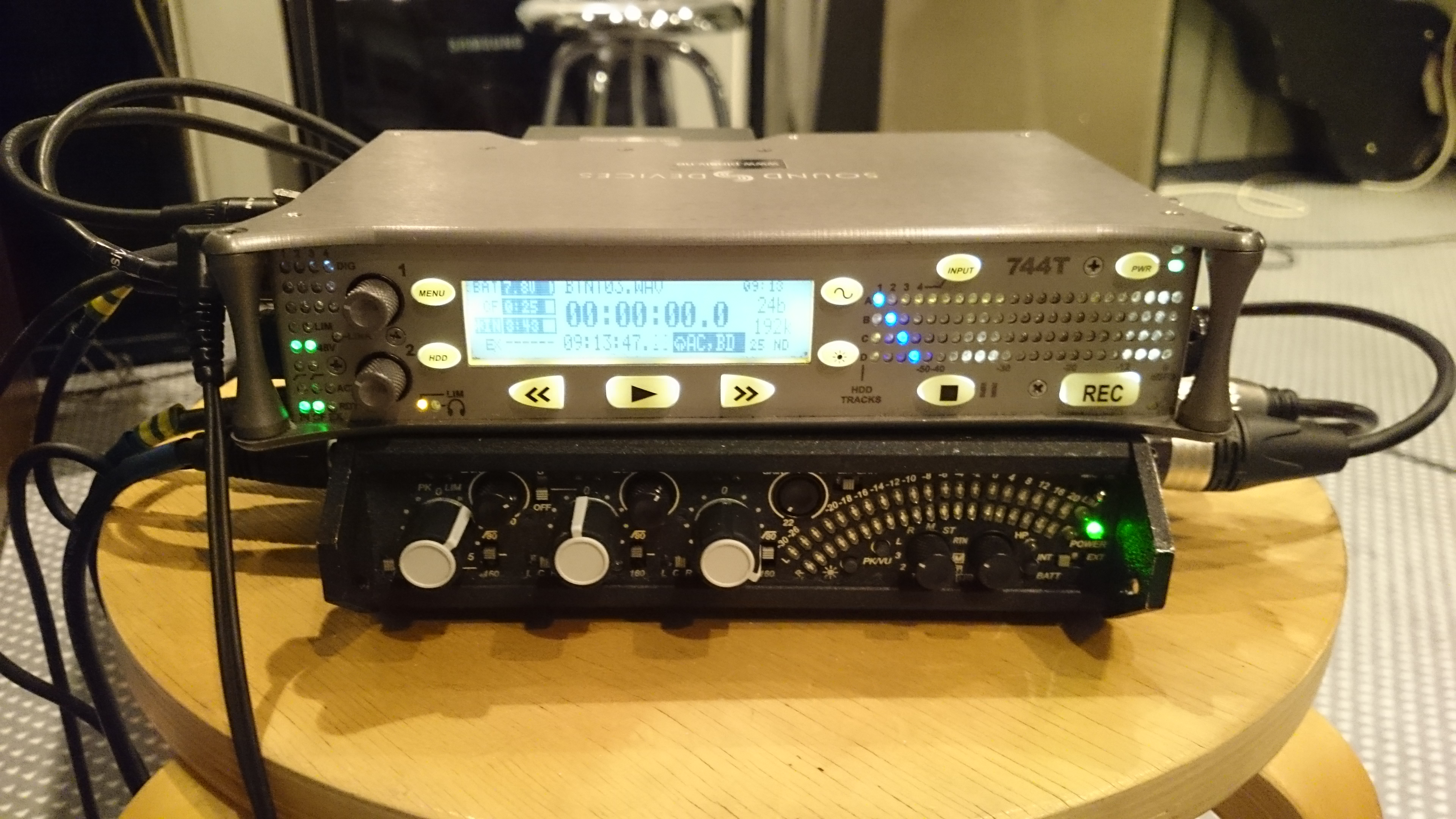
A few years back i found a storage area filled with old broadcast equipment. I returned armed with a small kit with a microphone and a recorder to capture the sounds of as many buttons and switches as I could. The sounds I recorded turned out to be very useful. Some years later, our company moved to a different location. At the new location I also found plenty of old and new equipment in a storage area. I decided to repeat the success and record more buttons and switches.
Because I didn’t have to transport my recording equipment to a different location, I had the option to use more equipment than last time. I wanted to get even more useful material than last time. To accomplish this, I planned to do mainly two things differently:
- Capture more variations of each button. Many buttons and switches sound very different if you go hard/fast than if you go slow/soft when you press/flick them.
- Capture every button with more than one microphone. The same button can sound high pitched and clicky through one microphone and full and punchy through a different one.

I spent a few hours testing different microphones. I ended up maxing out my Sound Devices 744 and using all four inputs for most of the recording sessions. The microphones I chose were:
- Barcus Berry contact microphone. This captures a very different sound and the resulting recording can be very useful for sound design. Buttons and switches tend to sound full-bodied, mechanical and abstract.
- Large diaphragm microphone. I switched between a Neumann U87 AI and a Brauner Phantom Classic. The large diaphragm microphones sounded very natural on most buttons. The Brauner has lower self-noise than the Neumann, so I ended up using that the most.
- DPA 4041 small diaphragm omni microphone. The DPA sounded natural and a bit clicky on most of the recordings. It also has very low self-noise, which was very practical.
- Sanken CU31 small diaphragm cardioid microphone. The Sanken sounded more bassy than the other microphones. This makes most buttons and switches feel more punchy. The Sanken has higher self-noise than the other microphones I used, so it didn’t work as well on everything.


The recording sessions were pretty straight forward. I tried pressing each button slowly, fast and somewhere in between to figure out what I wanted to record. If a button sounded very different depending on the speed, I recorded several takes of each speed. If it sounded pretty much the same, I recorded just one speed. I also moved the contact microphone around on each piece of gear to find the best position for each button.
When I edited the recordings later, I fully realized how much “free” material I got because I used four different microphones. Some buttons sound like a completely different one through each microphone. The contact microphone always brings out something special and very different from the other ones. This is great for abstract sound design or if I just want a special sounding button. The other microphones brings out a different, unique aspect of the same button. This is great if I find a sound I like, but that’s not 100% what fits the project. I just try a different microphone and I can get some more punch or some more of the clicky, high-pitched sound.
The sound collection is available on the Norsonant website.
Norsonant – Multichannel buttons and switches from Plosiv on Vimeo.
 Home
Home